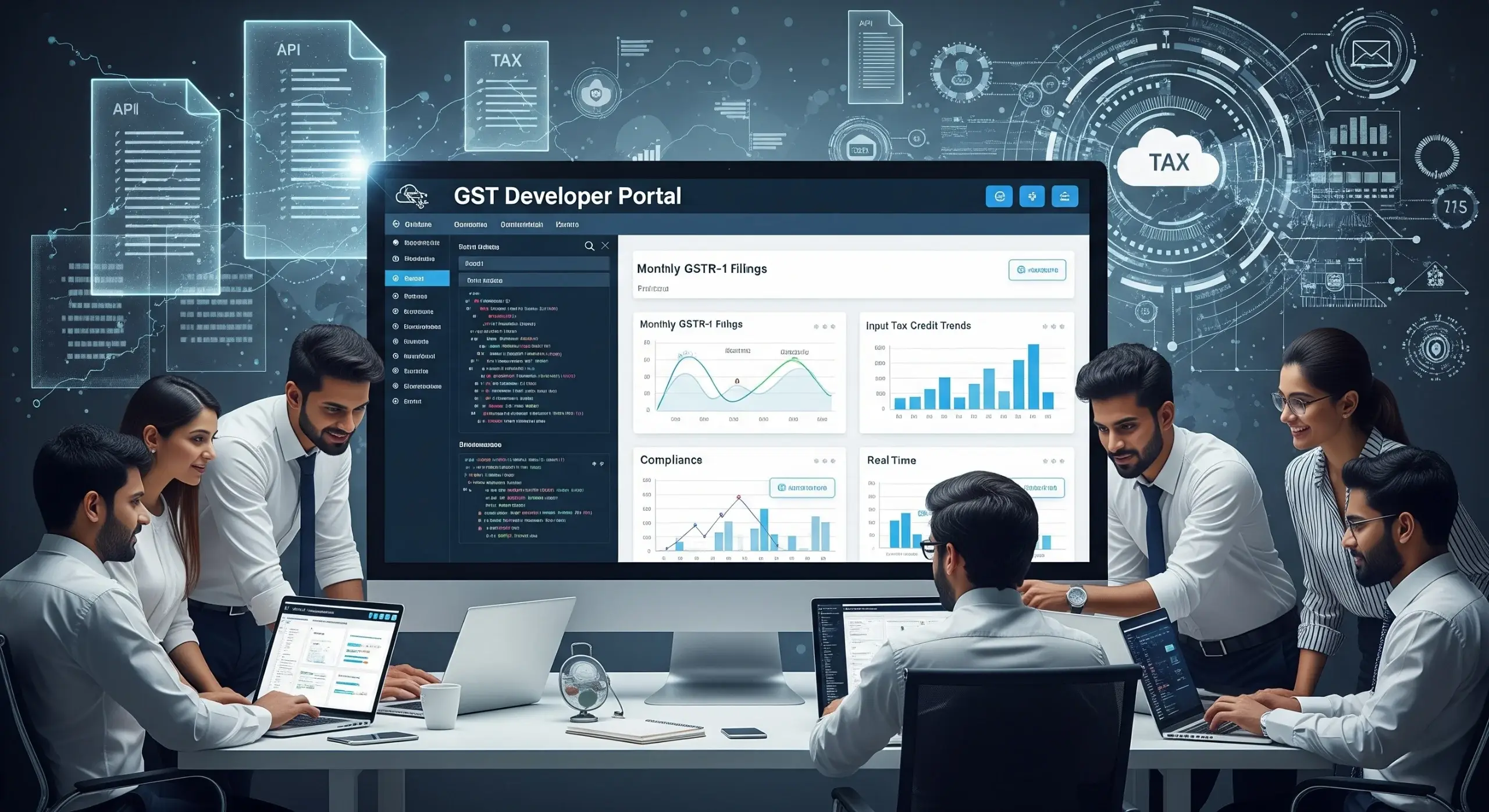GST Developer Portal: The Backbone of Digital Taxation in India

Taxation in India has come a long way from the days of bulky ledgers and endless state-wise filings. The introduction of GST (Goods and Services Tax) brought transparency and simplicity by unifying everything into one digital system. At the heart of this transformation lies the GST Developer Portal, a powerful platform that supports the technology behind seamless returns, invoices, and registrations, making taxation easier for businesses and professionals alike.
What most people see is just the GST portal used for day-to-day compliance, but the real backbone is the developer side of things. The GST Developer Portal quietly enables fintech companies, software providers, and developers to integrate services, automate processes, and innovate new solutions. Much like the backstage crew of a theatre, it may not always be visible, but without it, the show simply wouldn’t go on.
A Quick Recap of GST in India
When GST was introduced in 2017, it was called One Nation, One Tax. Earlier, we had VAT, Service Tax, Excise, Entry Tax, and what not. Every state had its own set of rules, which often confused traders. But GST simplified the game by bringing everything under one umbrella.
Today, whether you are selling samosas in Surat or software in Bengaluru, GST applies uniformly. The GST portal is where taxpayers file their returns, claim input tax credits, and manage compliance. But for this digital giant to function properly, it needs constant updates, integrations, and innovations. That’s where the GST developer portal plays a vital role.
What Exactly is the GST Developer Portal?
Think of the GST portal as the main road where everyone drives. Now imagine developers wanting to build new vehicles, shortcuts, or fuel stations along that road. They need access to APIs, sandboxes, technical documents, and integration tools. The GST developer portal is exactly that platform.
It provides:
- APIs for GST integration – Businesses can connect their accounting software directly with GST systems.
- Sandbox environment – Developers can test their applications before going live.
- Documentation and guidelines – To ensure smooth and secure integrations.
- Support for fintechs and startups – Helping new-age companies build GST-compliant products.
In short, the GST developer portal is the engine room where technology meets taxation.
Why is the GST Developer Portal So Important?
They say “Rome wasn’t built in a day.” Likewise, the GST system in India needed constant development and innovation. The GST developer portal ensures that businesses and developers don’t reinvent the wheel each time they need a solution.
Here’s why it matters:
- Automation of Compliance
Filing GST returns manually is like carrying water in a leaky bucket full of errors and wastage. Through the GST developer portal, software companies build automated systems that file returns, reconcile invoices, and calculate taxes accurately. - Boost to Startups and Fintech
Today, India is buzzing with fintech apps, ERP tools, and accounting solutions. Without the GST developer portal, each of these companies would struggle to integrate GST compliance. Thanks to the portal, they get ready-made APIs and guidelines to plug into their platforms. - Error Reduction
Manual entries often lead to fat-finger mistakes. The GST developer portal reduces human dependency by allowing direct data exchange between systems. This means fewer errors, fewer penalties, and more peace of mind. - Encouraging Innovation
Just like a cricket pitch allows batsmen to play their strokes, the GST developer portal allows innovators to experiment. Developers can create new GST-ready billing apps, AI-based reconciliation tools, or mobile solutions for small kirana shops.
How Businesses Benefit from the GST Developer Portal
For a small trader in a Tier-2 city, the technical jargon of “developer portal” may sound like Greek and Latin. But in reality, it directly benefits him.
- Faster GST Filing: His billing software, powered by GST APIs, files returns on his behalf.
- Input Tax Credit Matching: No more sleepless nights matching invoices, The system does it automatically.
- Ease of Doing Business: Even a small shopkeeper can be GST compliant without hiring a big CA firm.
- Time and Cost Savings: “Time is money” – and with automation, both are saved.
Thus, whether you are a startup founder in Bengaluru or a wholesaler in Kanpur, the portal works quietly in the background to make compliance simple.
Government and Developers: A Partnership for Growth
It takes two to tango. The government provides the GST developer portal, but developers, fintechs, and ERP providers give it life by creating useful applications. Together, they ensure that the system doesn’t remain just a white elephant but becomes a real asset for taxpayers.
For example:
- Accounting software like Tally, Zoho, or QuickBooks uses GST APIs.
- Fintech apps integrate GST compliance directly into loan approval or vendor verification.
- Startups build mobile apps for micro-businesses to generate GST invoices on the go.
This partnership is like a well-oiled machine, where every cog plays its role.
Challenges Along the Way
Of course, no journey is without speed breakers. The GST developer portal has faced its share of challenges:
- Technical Glitches: Sometimes the APIs face downtime, delaying processes.
- Learning Curve: Small developers and startups may struggle to understand GST’s complex technicalities.
- Security Concerns: Since financial data is highly sensitive, developers must maintain top-notch cybersecurity.
However, the government has been constantly improving the portal, issuing updates, and providing training to developers. As they say, “Where there’s a will, there’s a way.”
The Road Ahead: Future of the GST Developer Portal
The GST portal is not just a tool; it’s the foundation of India’s digital tax system. As we move ahead, we can expect:
- More AI and Automation – Predictive tax analytics, fraud detection, and automated audits.
- Integration with UPI and Digital Payments – Making GST filing as easy as scanning a QR code.
- Support for Regional Languages – To ensure inclusivity for small businesses across India.
- Global Standards – As India grows into a $5 trillion economy, GST systems will align with global taxation best practices.
Final Thoughts
The GST system is also an ocean built on small contributions by businesses, developers, and the government. And at the heart of this ocean lies the portal – enabling, empowering, and enriching the taxation journey.
For taxpayers, it means simplicity.
For developers, it means opportunity.
For the nation, it means progress.
So, the next time you file your GST return smoothly through your accounting software, remember that somewhere in the background, The portal is working silently, ensuring the wheels of India’s economy keep moving without a hitch.
For expert Custom Software Development Services tailored to your business needs, explore our Software Development Services.
